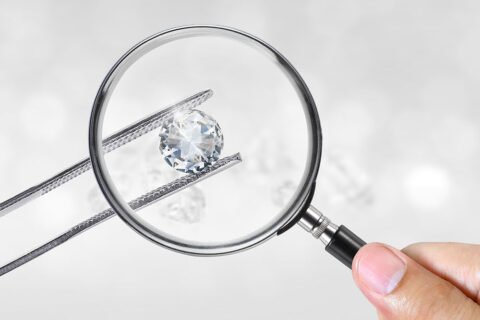The Science Behind Lab-Grown Diamonds: How Are They Made?
- Posted on
- by kamlesh.patel.djs@gmail.com

Lab-grown diamonds, also known as synthetic diamonds, are created in a laboratory setting rather than being mined from the earth. They have become increasingly popular in recent years due to their lower cost, ethical and environmental benefits, and their ability to be customized for specific purposes. But how are these diamonds made? Let’s take a closer look at the science behind lab-grown diamonds and the processes used to create them.
There are two main methods used to create lab-grown diamonds: chemical vapor deposition (CVD) and high-pressure high-temperature (HPHT).
“Brilliance without the baggage: Discover lab-grown diamonds.”
Chemical Vapor Deposition
The CVD process involves placing a diamond seed, which is a small piece of natural diamond, into a vacuum chamber. A gas mixture of hydrogen and carbon is then introduced into the chamber and heated to extremely high temperatures, which breaks down the gas molecules and deposits carbon atoms onto the diamond seed. Over time, the carbon atoms accumulate and form a new diamond, which grows layer by layer on the original seed. The process can take several weeks to several months, depending on the desired size and quality of the final diamond.

High-Pressure High-Temperature
The HPHT process involves placing a diamond seed into a pressurized chamber and subjecting it to extremely high temperatures and pressures, similar to those found deep within the earth’s mantle. A small amount of carbon is then introduced into the chamber, which melts and dissolves the diamond seed. As the chamber cools, the carbon solidifies and crystallizes around the diamond seed, forming a new diamond. The process can take several hours to several days, depending on the size and quality of the final diamond.

Both CVD and HPHT methods can produce high-quality diamonds that are virtually indistinguishable from natural diamonds. However, they each have their own unique advantages and disadvantages. For example, CVD diamonds are generally more affordable and can be produced in a wider range of colors, while HPHT diamonds tend to have fewer impurities and are more structurally sound.
In conclusion, lab-grown diamonds are created through sophisticated scientific processes that involve the manipulation of atoms and molecules to form new diamond crystals. These diamonds have revolutionized the diamond industry and offer consumers a more ethical, affordable, and customizable alternative to natural diamonds.





